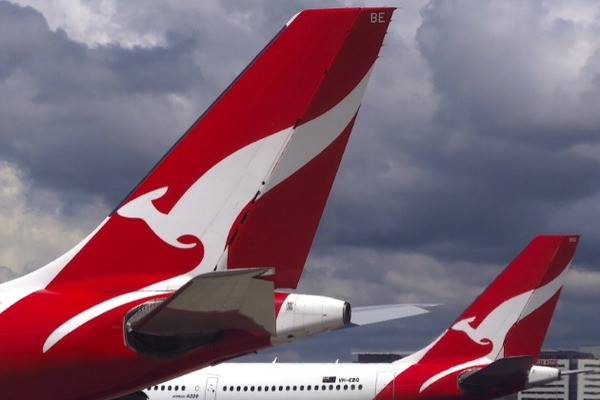Aviation history got rewritten with the touchdown of Qantas flight QF7879, a brand new Boeing 787-9 Dreamliner named Kookaburra (a type of Australian kingfisher), at Sydney airport at 7:43 am on Sunday after 19 hours and 16 minutes from New York's JFK airport at 9:27 pm Friday.
The flight, that had an equivalent carbon dioxide emission of burning more than 700 barrels of oil, had 49 people on board: six members of the cabin crew that includes a chef, Qantas' airlines chief executive Alan Joyce, six frequent flyers and a handful of reporters to find out if passengers can endure the mental and physical effects of flights with such duration.
Only a small number of passengers were allowed to take part to make sure the plane can make it all the way to Australia in just one tank of fuel at 101 tons, making up almost half of the plane's total weight on takeoff.
Likewise, the bar got restocked and the passengers were only allowed limited luggage.
Qantas' longest commercial flight is farther by 900km than the existing longest flight between Singapore and New York.
Qantas covered 16,200 kms (10,200 miles).
During an onboard interview, CEO Joyce said that this flight, from the east coast of the United States to the east coast of Australia, "is the last frontier in aviation."
The New York-To-Sydney trip is one of the three test flights in Qantas's Project Sunrise to test the practicalities of a very long commercial journey in a plane.
Upon landing, CEO Joyce said that this "significant first" in aviation is hopefully "a preview of a regular service" that will change the way people travel.
Acknowledging the challenges that ultra-long-haul flights pose, he added that the test flights they're doing "should give" better strategies so that the "comfort and wellbeing" of passengers are taken cared of along the way.
The passengers on the flight were kept awake for six hours and had a spicy soup and fish to help reduce jetlag.
The passengers, who all started in the business class, then transferred to the economy cabin, as the flight flew over Las Vegas, where La Macarena was being played to get their blood pumping.
During the flight, everyone got checked up to monitor their health and wellbeing.
In the same manner, all crew members had activity monitors on and completed alertness logs and sleep diaries.
Cameras were also present to record not only operational activities but also alertness cues.
Likewise, the pilots had EEG (electroencephalogram) brain monitoring equipment to monitor their alertness and sleep patterns.
Next month, another test flight from Heathrow (London) to Sydney is scheduled to set a new distance record of 17,000km at an estimated 19.5 hours.
The demand for long-haul flights is expected to increase from 4.6 billion this year to 8.2 billion by 2037 according to the International Air Transport Association.






